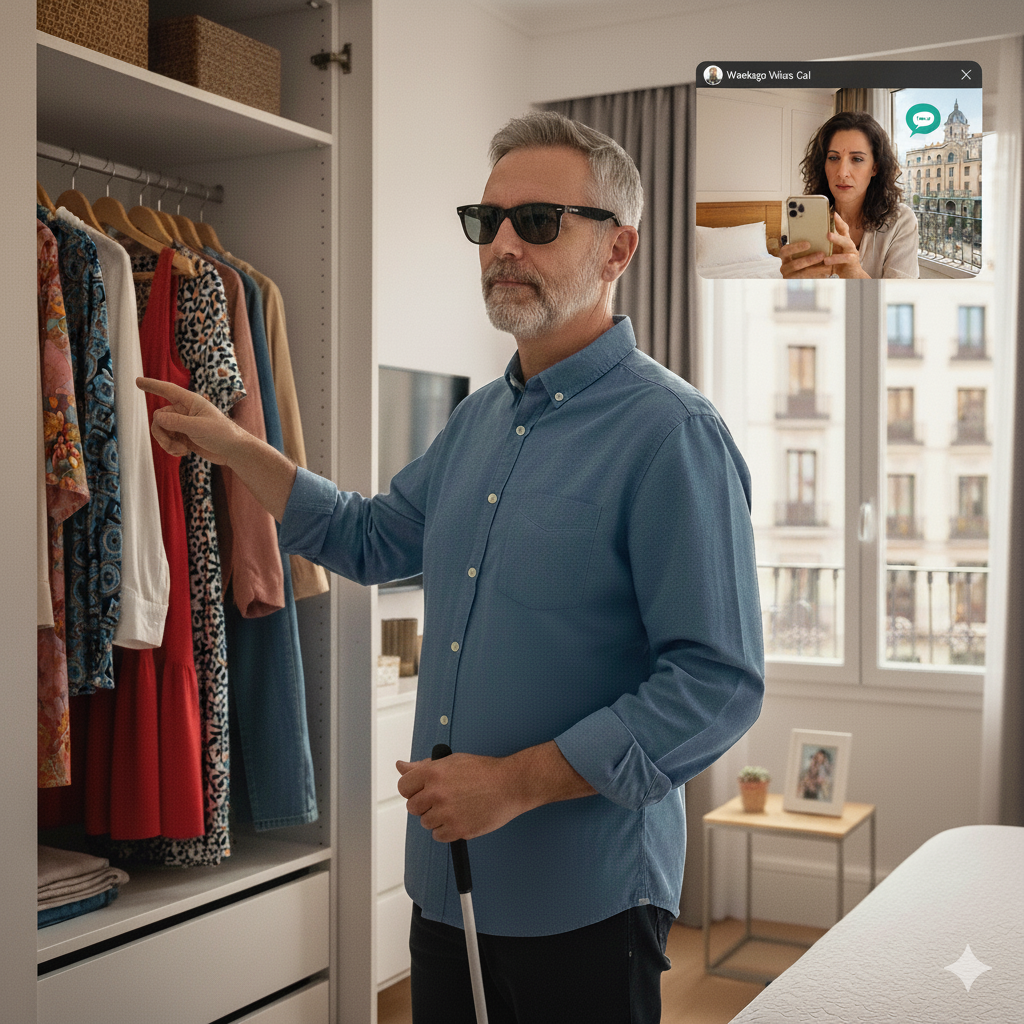Imagine my delight when I managed to help rescue my wife from a travel disaster after her suitcase went missing en route to Spain. With only a short window before a friend was flying out to join her, I put on my Meta Smart Glasses, fired up a WhatsApp video call, and let her choose replacement clothes directly from her wardrobe – using “my eyes” and hands as her own, directed via the video stream.
As a blind person, this would have been impossible not so long ago. For years, I’ve been writing about the potential of cameras as proxies for my eyes, microphones as ears, and smartphones as my brain. AI is already helping people like me in phenomenal ways – Be My Eyes and similar apps can identify groceries, read text, and assist with navigation. But sometimes, it’s the human in the loop that makes the biggest difference.
Not only did this episode earn me a few ‘browny points’ at home, it left me feeling genuinely empowered and included in a situation I never expected to help with. And really, wouldn’t every spouse, blind or sighted, be better off letting their partner choose clothes for themselves on a video call?
Inclusion and accessibility benefit everyone. What seemed like a travel nightmare was solved not with expensive tech or AI alone, but with a simple, affordable pair of smart glasses and a bit of teamwork.
For those worried about using a random person to help via hashtag#BeMy Eyes, you can now set up a community of friends and family with whom you might even have a conversation about clothes let alone choose a bottle of wine or do something medical!
hashtag#Accessibility hashtag#Inclusion hashtag#SmartGlasses hashtag#AssistiveTech hashtag#Empowerment hashtag#AI hashtag#BlindTech hashtag#DisabilityInclusion hashtag#MetaGlasses hashtag#BeMyEyes hashtag#TechForGood hashtag#DigitalInclusion hashtag#Innovation

